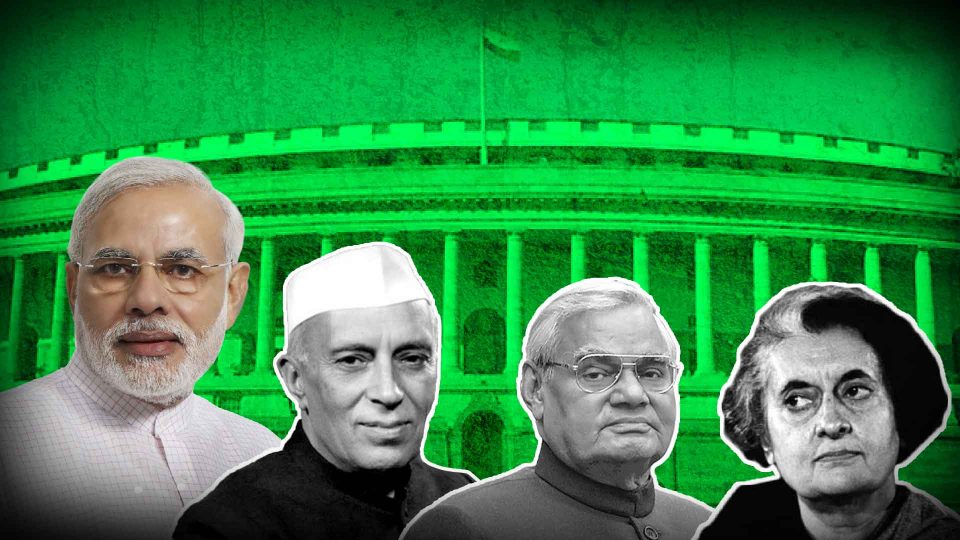Interestingly, 23 such No-Confidence motions have been moved against the Congress in the past, including 15 in the era of Indira Gandhi.
For the Modi government, Monday began on a quite stormy note as several opposition parties united to move the no-confidence motion against the ruling government. Last week, TDP after a bitter fallout with BJP and later with the NDA had issued a notice to Lok Sabha Secretary about moving a No-confidence motion against the Modi government. The move came after the Andhra Pradesh’s long-standing demand for Special Category Status was allegedly neglected by the government. Earlier, another party from Andhra Pradesh, YSR Congress had moved the no-confidence motion against the incumbent BJP.
On Monday, total three no-confidence motions were moved against BJP government. While TRS, CPI, CPI(M), TMC, Congress and AAP had supported the motion moved by YSRCP and TDP, Shivsena and Akali Dal abstained from supporting the former NDA ally.
CPIM supports the #NoConfidenceMotion motion in #Parliament against the BJP govt. Its betrayal of the promise of special status for Andhra Pradesh is inexcuseable. pic.twitter.com/GQuhSutu6W
— CPI (M) (@cpimspeak) March 16, 2018
As the motion was not moved on Friday, it was expected that Lok Sabha speaker Sumitra Mahajan would introduce it in the Lok Sabha today. However, citing the reason of the continuous uproar, Mahajan adjourned the house till tomorrow and the motion was not introduced even today.
While the opposition has intensified its attack on the Modi government, let us understand first what the No-Confidence motion means and why is it moved?
What is No-Confidence motion?
A no-confidence motion is a vote against a particular authority (Managerial or government) expressing that the authority is no longer able to hold up the confidence of the people or in case of government, that of the parliament. The vote thus indicates that the authority is no longer fit to hold a position of responsibility.
The no-confidence motion is not moved against a particular individual or a group of individuals but is introduced against the entire council of ministers in Lok Sabha. It is moved against the cabinet ministry as a whole. The mover of the motion is also not bound to provide a reason for the step.

How does it work?
If a party or Member of Parliament want to move a no-confidence motion against the Council of Ministers, they first need to submit the notice to the Lok Sabha speaker. The Lok Sabha speaker then asks the house if they want to admit the motion for discussion. A voting is done on the same. To move the no-confidence motion, the support of 50 MPs is required. Once, it is admitted the mover presents several charges on the government and the Prime minister or any other minister of the cabinet is bound to answer the question.
After the debate and discussion, again the voting is conducted. If a majority of the members of the House vote in favour of the motion, the motion is passed and the Government is bound to vacate the office.
Is it a cause of concern for Modi government?
Technically, the motion will not hurt Modi government or the government will not have to vacate the office. The reason being, the ruling party enjoys the majority in the Lower house. The BJP alone has 282 members in the Lok Sabha which is bigger than the total number of opposition MPs and the allies. Thus, the motion will not affect the government.

However, the credibility of the Modi government is bound to take a hit. Especially, at a time when the 2019 Lok Sabha election and several assembly elections are on the cards, the no-confidence motion comes as an embarrassment for the Modi government. If the motion is admitted, several issues and alleged inability of the government will be discussed. This means the Modi government will be cornered in the parliament. The Special Category status issue will also hog the limelight.
Ahead of the Karnataka Assembly Elections, the hampered image in southern states will set the BJP on the back foot.
Previous cases of No-confidence motion in India:
The first-ever no-confidence motion was exercised in the year 1963. Acharya Kripalani, the ex-congressman and Member of parliament from the Praja Socialist Party had moved the No-confidence motion against the Nehru government immediately after the bitterly fought Indo-China War.
In 1967, former Prime Minister Atal Bihari Vajpayee had moved a no-confidence motion against the Indira Gandhi government-the then Prime minister. Subsequently, in 1979, Congress leader Y B Chavan moved a no-confidence motion against the then government following which Vajpayee had resigned even before the motion could be voted. Vajpayee also had moved a no-confidence motion against P V Narasimha Rao-the non-Congress Government against which no-confidence motions were brought twice was led by Morarji Desai, who headed the Janata Party regime.

The last such motion was brought by Sonia Gandhi in 2003 against the Vajpayee-led NDA Government. The motion had come almost after four years of the then Prime Minister Atal Bihari Vajpayee after five years in all.
Interestingly, 23 such motions have been moved against the Congress in the past, including 15 in the era of Indira Gandhi. The then leader of the opposition Sonia Gandhi attacked the Vajpayee government on several charges. The debate was going on till late at night. The then PM Atal Bihari Vajpayee only got up at 11 PM to replay the charges. In his famous reply, he also challenged Sonia Gandhi to fight the party in the electoral ground.
While, the NDA government managed to negate the motion, the following year, Congress-led UPA had stormed to power toppling the first ever NDA government.
As an independent media platform, we do not take advertisements from governments and corporate houses. It is you, our readers, who have supported us on our journey to do honest and unbiased journalism. Please contribute, so that we can continue to do the same in future.

